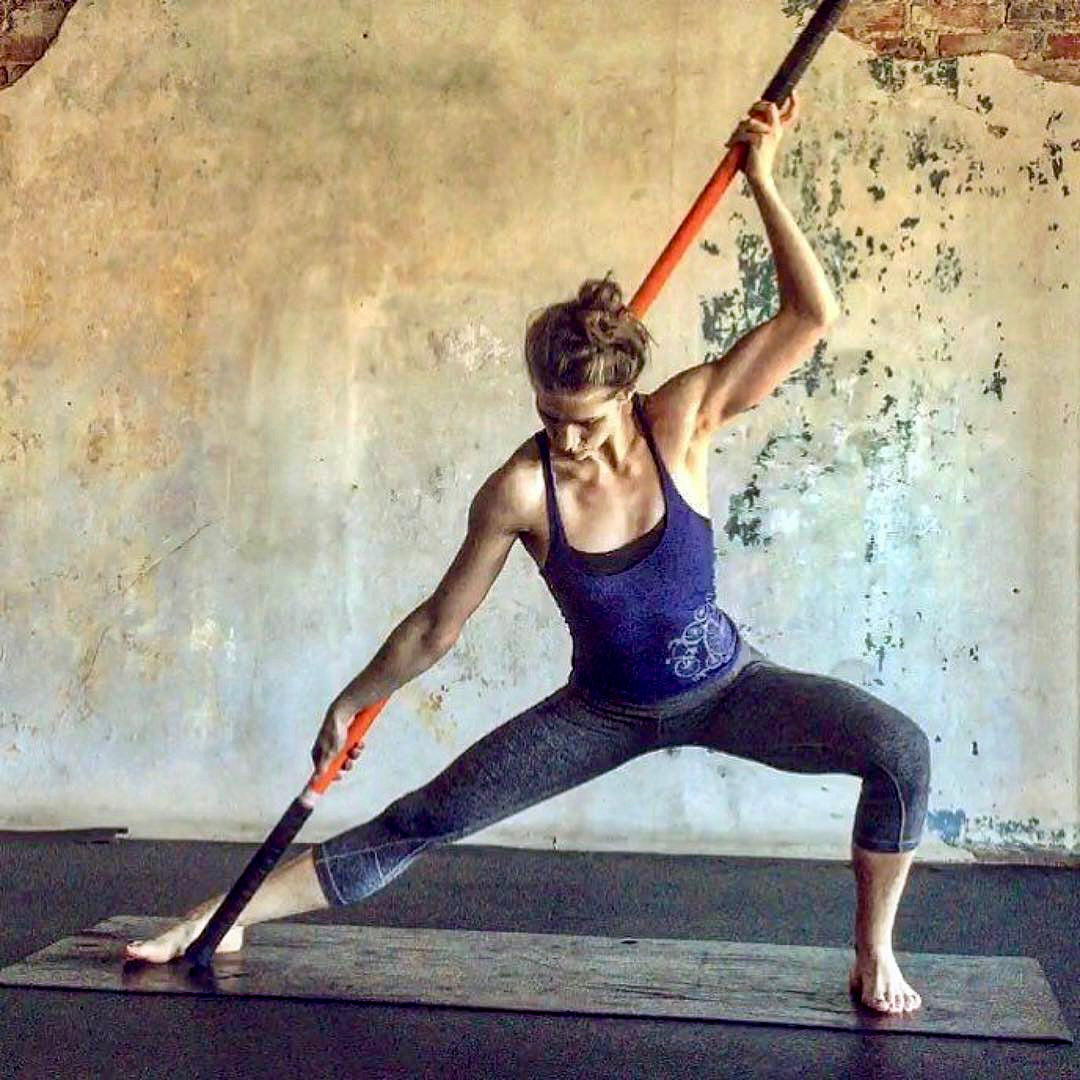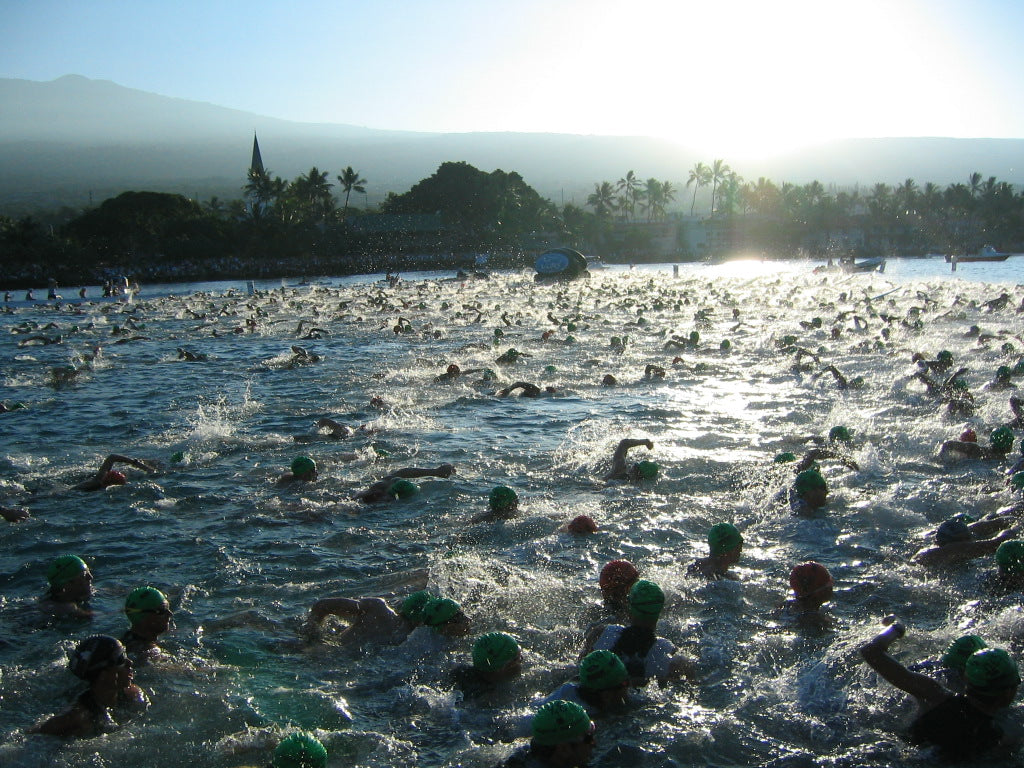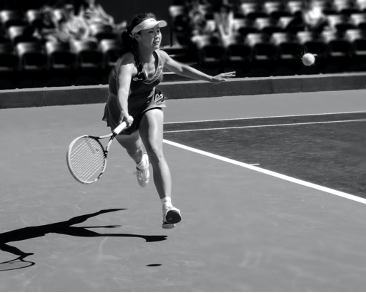Do you practice the same repetitive movement at the gym? What about the same stretches to warm up or end a good cardiovascular session? We’re all creatures of habit who prefer familiarity in our regimented practices, but does this actually elicit any change or growth?
Every movement practice reaches a stagnant point where the body craves something different. It wants to stretch and expand in varied ways, especially after repetitive practices and stretches. The practice of yoga isn’t any different.
For some reason, we have separated movement theories and ideologies from one another to try to make them more unique. This has created a great divide among practitioners and a lost opportunity to fuse movement practices that allow for greater expansion and healthier movements.
Modality Infusion
Imagine the concept of taking mundane yoga poses (asanas) and using Stick Mobility Training Sticks to not only increase extension in Eka Pada Raja Kapotasana (One-Legged King Pigeon Pose) without compression but also to create more stability in postures that require a lunge, helping to reduce tension in the knee and ligaments.
As someone who’s been a yoga practitioner for over 24 years and a yoga teacher for 18 years, I’m bored with my practice. My body no longer ‘feels’ certain poses, and I’ve hit an emotional and physical threshold, asking myself, now what? How do I create a different movement or pattern that leaves my body feeling refreshed and my muscles craving more?
Movement isn’t linear; it’s not meant to be repetitive, it’s meant to be primal. Stretching is the same. Many yoga poses offer extension and flexion to the body's mechanics with some lateral movement. Still, there is very little room for creativeness and playfulness regarding how the body ‘wants’ to stretch.
My journey with Stick Mobility began when I stumbled across a video of the Kayak movement to mobilize the shoulders. I was dealing with a rotator cuff injury then and wasn’t getting much out of my rehabilitation as something felt missing. I purchased the four-foot Training Stick to feel my body's movement and was amazed at the results.
As a yoga teacher, I couldn’t help thinking about how to incorporate these Training Sticks into my current yoga classes and how it would enhance standard yoga postures. During my practice, I was intrigued to offer deeper myofascial stretches, add more concentric contraction, and embark on learning more. Once I completed the Level 2 Stick Mobility Course, I knew I needed to create a Stretch and Stick fusion to enhance how my yoga students move.
Yoga isn’t a practice of perfection; it’s a practice of patience, and it teaches us to cultivate more awareness of how our body moves and what it needs in this moment, which is specific and unique to each moment. We begin to observe our body through the movement, not just with how it ‘looks’ but how the body ‘feels’ in each posture.
Enhancing Mobility
A yoga posture can often feel restrictive due to the natural composition of our bones and joints or an injury. While yoga postures are wonderful at creating more length in tight areas such as the back, hips and shoulders, there isn’t a great deal of focus on increasing range of motion, and this is where Stick Mobility is helpful for yoga practitioners.
We love the movements that extend (arms behind the body) or flex (arms above the head) in yoga, but our hips and shoulders have more range, and only using these two movement patterns doesn’t optimize the potential in any yoga practice. Most yoga poses don’t match the Western body, riddled with injuries and restrictions. Stretching the muscles doesn’t help the body get more substantial or more resilient, but balancing practice with stability, mobility, and flexibility can help.
The addition of using Stick Mobility in a yoga class revolutionizes how we CAN move. Only some people can align their shoulders over the hips in Trikonasana (triangle pose) or place their hands on the floor. When the shoulders are rigid in this pose, it takes away from the intercostals and the lateral stretch, but adding a Training Stick to this pose opens up the ability to create more rotation with less pressure on the shoulders.
I was thrilled to see some familiar yoga poses in my Stick Mobility training where the focus wasn’t always deepening the stretch but rather creating more functional rotation or extension, which can be difficult for so many beginner students. There are many benefits to fusing yoga poses, such as Ustrasana (camel) and Stick Mobility’s variation, pressing the Training Stick into the wall to create more stability and balance while deepening the extension.
Eka Pada Raja Kapotasana (One-Legged King Pigeon Pose) is challenging for our tight North American hips due to tight hip flexors and poor extension. Incorporating a Training Stick into this pose allows the practitioner to lengthen the anterior side of the body, which places less tension and compression on the back.
When practicing yoga postures, the body feels several different muscle groups in any pose, but isolating each muscle group can be challenging when an awareness practice hasn’t been established. Imagine practicing one posture or movement but focusing on isolating each muscle group one at a time. Now, THAT is a yoga practice!
And how can we do this exactly? By using other tools to enchase the isolation. Muscles have an essential function but aren’t the ONLY aspect of the body that needs to stretch and move. If the asana practice intends to prepare the body to surrender to moments of stillness and silence, doesn’t it make sense to optimize the body's mechanics fully?
Leveraging Training Tools
In yoga, we believe that nothing is separate from another. That everything and everyone is equal. The one truth in this statement is that we’re all aging. As we age, movement practices and patterns become more challenging due to decreased hormones, making it difficult for muscles to gain strength (estrogen and testosterone). We need more techniques that help to create more functional movement, myofascial stretching and strength, which is why the fusion of yoga and Stick Mobility is crucial.
Yoga has many physical, emotional, mental and spiritual benefits, from regulating the nervous system by reducing stress hormones to increasing cardiovascular activity. By its very definition, Yoga means to ‘yoke’ or bring union to mind, body and spirit connection. So the practice feels more evolved and expansive when we seek to evolve and fuse the guidance and wisdom of other modalities. Don’t just practice yoga, practice sustainable movement.
Clare Newman (Stick Mobility Guest Author)
E-RYT, Level 2 Stick Mobility Coach
For more information on Stick Mobility click HERE.


